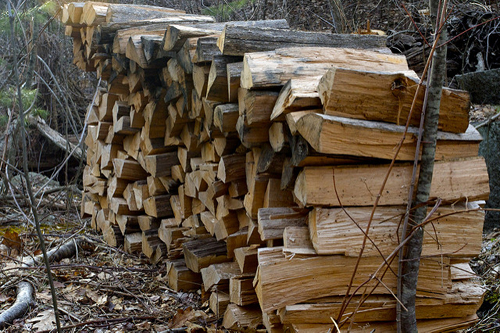
Felling Dead Trees: Listen and Watch Out
By Nathan Stanford, Forest Safety Instruction, Wisconsin Dells, WI
Standing dead trees are coveted by landowners for firewood. But they are also one of the most dangerous trees to cut. When a tree dies, wood strength decays. Limbs break off more easily and are named “widow makers” for a reason.

Personal protective equipment (PPE) is always a must, including a helmet with face shield, safety glasses, chaps, hearing protection, and gloves. I am confident if you wear your PPE a few times, you will feel unsafe without it.
Safety equipment and the fundamentals of cutting are covered in basic chainsaw safety courses.
And always follow the five fundamentals of tree cutting: look for hazards, know the tree lean, have an escape route, place and size the hinge cut correctly, and follow a cutting plan.
Listen
What looks like great firewood on the outside may be rotten and useless on the inside. With a mallet or the back of an axe, “sound” (rap hard) the trunk and listen. Repeat this in several spots to make certain the tree can be felled safely. If you hear something “drum-like,” the tree is probably hollow or rotten, making it useless as firewood.
Compare the dead tree to a neighboring live tree, using a wooden or nylon hammer to minimize bark damage to live trees. Look up while you do all of this and watch for loose limbs. Even a small limb falling from the tree canopy can cause serious injury.
Watch out
When a dead tree hits the ground its crown shatters, sending branches in many directions. In some cases, dead branches break off as the tree falls, land on the branches of neighboring trees, and then, like a catapult, are sent back in the direction they came – toward you.
So, plan an escape route. As soon as the tree begins to fall, be prepared to shut off your saw and walk away from the falling tree at a 45-degree angle and a distance of 20 feet.
Above all, pass on any trees that are outside your comfort zone; professionals do this all the time. It’s of little comfort to cold winter shins; however, rest assured that a standing dead tree left in the woods provides countless critters all sorts of comfort.
The author, Nathan Stanford, is certified through the Safety and Woods Worker (SAWW) Training program and the U.S. Forest Service, and has trained landowners, federal, state, and municipal employees, and private businesses and organizations for 15 years.
